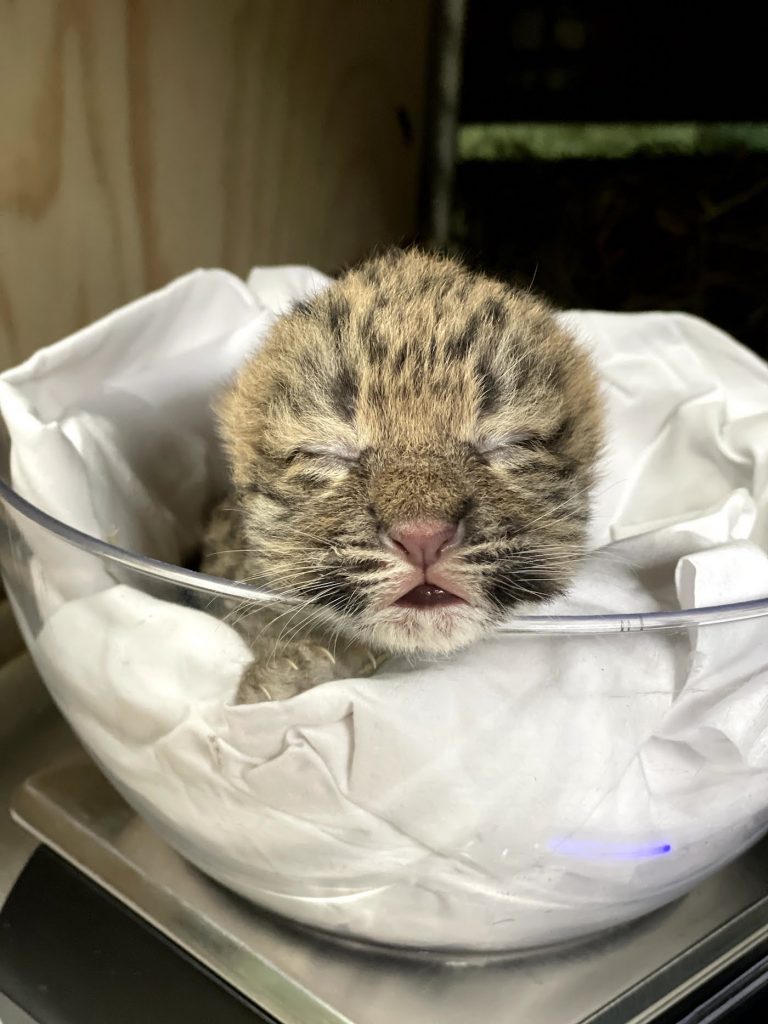A Tiny Bundle of Joy: Amur Leopard Born at the Zoo

Less than a year since the Santa Barbara Zoo welcomed a baby lion, the nonprofit has added a new member to the family, Marta, a 517-gram Amur leopard born on August 6 — the first birth for this endangered species in more than 20 years at the zoo.
Much like Pauline the lion, Marta will initially only be seen through periodic pictures released by the zoo, as she will remain behind the scenes for several months to bond with her mother, Ajax.
Zoo staff is monitoring nursing closely via video, with some initial aid provided.
“Based on video monitoring, the cub appeared strong and active after birth,” said Dr. Julie Barnes, the zoo’s vice president of animal care & health. “Unfortunately, we did not see any confirmed nursing within the first 12 hours after birth, so the cub required some supportive care. Ajax was separated briefly from the cub and then reunited. Nursing was observed a few hours later.
“Ajax seems to be settling into motherhood well and is exhibiting good maternal behavior so far. The first week is a critical period for cub survival. If all goes well, we will leave mother and cub alone to bond during this time and continue monitoring them closely by video.”
Once healthy and bonded, Ajax and Marta will be seen as a tandem, with Marta’s father, Kasha, staying solo in the Amur leopard habitat. In the wild, males and females do not stay together after breeding, so separation is needed for the safety of Ajax and Marta.
According to the zoo, Ajax is “the most genetically valuable female Amur leopard in North America currently, so this first cub from her will contribute valuable genetics to the population in human care.”
Amur leopards are the most endangered big cat in the world, with less than 100 remaining in the wild, mostly in a small area at the Russia-China border. The biggest threats to the species in the wild are poaching, forest fires, inbreeding, and development. There are nearly 200 Amur leopards in human care across the world.
The birth ends a multi-year process of attempting to breed the species in Santa Barbara, with Kasha having moved to the zoo for this reason in March 2020, a recommendation by the Association of Zoos and Aquariums.
While Marta won’t be seen by patrons for a while, there are ways to interact with the cub, with the Foster Feeder program, with various donation levels available. Visit https://sbzoo.pivvit.com/foster-feeder for more information.







You must be logged in to post a comment.